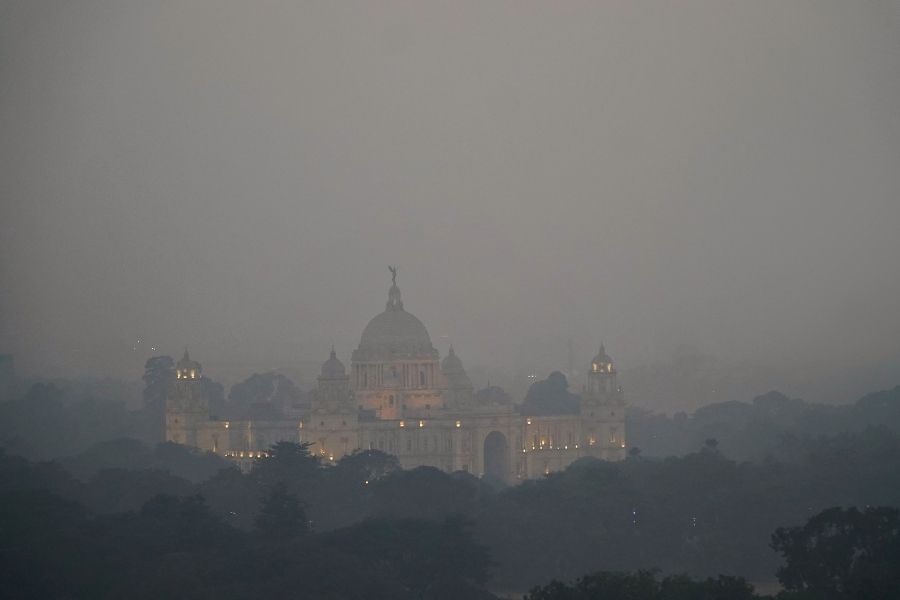My last trip to Varanasi was a hurried one. I was attending a young cousin’s wedding, so the one day I was there was devoted to the celebrations. I had a nice time, no doubt, but came back home with a bit of regret. The fact that I had gone to Varanasi but not eaten out in the streets was a troubling thought.
That’s because Varanasi is known for its street food. And it has such a wide variety of dishes that it could even rival some of Delhi’s streets. In fact, the chaat of Varanasi is considered by some chaat lovers as the best in the country. Chaats are of many kinds too — starting right with papri chaat to aloo chaat and tomato chaat, where a potato tikki is roasted on top of chopped tomatoes, mashed and cooked in a sauce flavoured with chillies and spices.
 |
| Aloo Dum Banarasi |
Some of the lingering disappointment was wiped off the other day when I met Shivanand Kain, the executive chef at a new hotel called Jaypee Greens Golf & Spa Resort in Greater Noida, on the outskirts of Delhi. Chef Shiva — as he is generally known — is a most interesting man, having worked in various capacities in various hotels in various cities. And as we were talking, I got to know that he had worked at the Taj Ganges in Varanasi — and, to my great joy, had specialised in Banarasi food.
Of course, we got talking about Banarasi food — which is to my mind one of the most sublime cuisines of the north. What makes it so good is that most dishes are full of flavours but not overwhelmed by the usual onion-tomato masala.
Take, for instance, the aloo dum Banarasi. Now many parts of the country have their aloo dums, but what makes the Banarasi one special is the fact that the potatoes are stuffed and cooked in gravy thickened with jaggery, fennel and chilli paste. Or take nimona, a dish cooked with boiled peas, potatoes and moong dal vadis, and flavoured with spices.
The chokha bati dal is another city favourite — and consists of a flour bati with a stuffing, served with chokha — brinjal slow roasted on a dung fire and then mixed with mustard oil. “Because the city is close to Bihar, its cuisine has some influences of Bihar too,” the chef points out.
With the food of Varanasi, you can tell how diverse the state of Uttar Pradesh is. Banarasi khana of eastern UP can’t be more different from the food of the western region. Banarasi food — unlike the food of the Jats of west UP — is elaborate. Flavours matter, and any dish — such as tahari, a simple rice dish — is cooked with various kinds of vegetables and spices. West UP’s tahari is a simple pilaf cooked with seasonal vegetables. The Banarasi version has the flavours of kasoori methi (dried fenugreek leaves), asafoetida, ginger, bay leaves, cloves, cardamom and cinnamon.
 |
| Nimona |
What’s interesting is that chef Shiva has been working not just on the common food of Banaras, but delved deep into the region’s royal cuisine too. Nudging him in the right direction was the late Maharaja of Kashi, Vibhuti Narayan Singh, who was the chairman of the Taj hotel where the chef worked. “So I got quite a few chances to get a real taste of royal treats,” he says.
One of the rich but again little-known dishes of Varanasi is a halwa cooked with lotus seeds . “I first had this halwa at a wedding in Varanasi,” says the chef, pointing out that the halwa has a laborious recipe, which is one reason why it’s cooked mostly on special occasions such as weddings. “But it’s worth the effort,” he says.
I think the food of Varanasi is so magical because the city has so many aspects to it. It is vibrant — with the river, the old havelis, the little lanes and bylanes, the pilgrims and the widows, the weavers and the potters all adding to its vitality. And when a city is full of life, so is its food.
Kamal Gatte Ka Halwa (serves 4-6)
Ingredients
• 1kg broken lotus seeds • 400g ghee • 200g sugar •50g almonds •25g pista
 |
Method
Soak broken lotus seeds in cold water for at least 12 hours. Remove the hard black skin from the top and peel the green skin from the seed. Wash them thoroughly in running water and make a granular paste. Heat the ghee in a thick-bottom kadhai (not an iron vessel, otherwise the halwa will turn black). Add the lotus seed paste and keep cooking slowly till it turns pinkish. You can now remove the excess ghee from the mixture. Make a sugar syrup with the sugar and 500ml of water. Add the syrup and cook till the halwa is thick and well done. Garnish with sliced almonds and pistas. Serve hot.










